DBA Air
Welcome to my Blog
I am starting this blog just as I am starting my airline career. Feel free to ask any questions, or if you are in need of any help related to seeking employment with an airline then just let me know. I really enjoy helping others in any way that I can.
This is my blog with a name that stems from a long standing joke. Damnit Bobby was a term thrown out during a fun family sports match. Damnit Bobby Airlines was destined to be a loving name given to any flight I conduct which has passengers on board
I was a flight instructor and a part 91 (private carriage) pilot prior to becoming employed with an airline. Please enjoy the blog, and feel free to comment about anything and everything.
This is my blog with a name that stems from a long standing joke. Damnit Bobby was a term thrown out during a fun family sports match. Damnit Bobby Airlines was destined to be a loving name given to any flight I conduct which has passengers on board
I was a flight instructor and a part 91 (private carriage) pilot prior to becoming employed with an airline. Please enjoy the blog, and feel free to comment about anything and everything.
Monday, March 26, 2012
Sunday, January 15, 2012
Pitfalls to avoid
As I like to do before every flight, I consider all of the little things that can become big "gotcha's" if left unnoticed. These are the things that seem to get a lot of pilots who are emotionally motivated for whatever reason. Emotions do play a large part of the human factors element to flying, but there are even solutions to avoid the dangers associated with those. Flying in a two person crews, as I do, there is even the potential danger that the person you are flying with is in some way emotionally compromised. All of the human emotions to the side for the moment, I thought I might share some things that I do to try and avoid potential pitfalls during the approach to landing phase of flying (which still remains the highest incident rate phase).
Starting off with the transition to visual. I have the saying "If it's all white, don't bite". Meaning, if your VASI/PAPI lights are all white, don't bite on the urge to pitch down to capture the "on path" indication. This is important at night and at unfamiliar airports. Pilots often have a tendency to want to excessively lower the pitch in an attempt to establish or regain the correct glidepath as quickly as possible. That technique can put your airplane in a condition that could lead to a CFIT (Controlled Flight into Terrain) incident should there be any obstacles in the visual segment of the approach. Some approaches make specific note that the VGSI (Visual Glide Slope Indicator; ie. VASI, PAPI ect...) is not coincident with the glidepath. Yet, pilots will still try to over control the plane and intercept the VGSI as quickly as possible. That leads me to another pitfall that I always try to be sure I am thinking of. Never rush yourself to the scene of the accident. Just because an approach occurs closer to the ground, there are very few reasons or conditions that would require a pilot to act immediately and as quickly as possible. My Dad shared with me what his Air Force instructors told him when he was going though his Air Commando training..... Fast is slow, slow is smooth, and smooth is fast. The more quickly you try to do things inside of the cockpit the more mistakes you will make. As the mistakes pile up you eventually reach a point where you MUST go back and correct those mistakes, otherwise you may find your back against the wall. So from what his instructors told him, you can see that the faster you do things the more mistakes are made, the more mistakes that are made the more corrections you must make. At the end of that vicious cycle you have just caused much more time to go by than if you had just taken your time and acted calmly and purposefully and accomplished everything correctly the first time. When things go smoothly, less time has expired. So, smooth is fast! This holds true for everything from aircraft control to executing missed approach procedures. I have a name for pilots who try to do things as quickly as possible, I call them the "ninja hands". Pilot's with Ninja hands often have problems controlling airspeed on the missed approach, often have the wrong missed approach course selected, and often have the wrong VOR frequency tuned in. All common mistakes from someone who does things as quickly as they can.
Again, that leads us to the next pitfall I wanted to just hit upon. During the missed approach, pilots often feel rushed to get things done. No doubt it is one of the higher workload times that we may face, yet pilots often forget that we are already prepared for this moment. We always look over the missed approach procedure prior to commencing the approach. After all, if you are shooting an approach why would you try to get in if you couldn't get out? Nothing that takes place during the missed approach procedure should be a surprise. Take your time, advance the throttle smoothly, pitch up smoothly to transition to a climb, and then after a positive rate of climb has been established clean the plane up. Always focus on flying the plane first, never let a configuration change lead you into the side of a mountain. To that note, I have seen some pilots who are adamant about cleaning the plane up as quickly as possible. Here is some food for though: During our terrain escape procedure on the Saab we do not change configuration until the terrain warning stops OR we are positive we are clear of the terrain. Why? During the transition from having the flaps down to retraction your climb angle actually shallows out as the lift is lost. For MAXIMUM climb rate, a configuration change is the last thing you want. So, why race to retract the flaps? The longer you delay flap retraction and pitch for Vy the better your climb will be. If terrain is an issue, retracting the flaps late is a good thing. You will still clean the airplane up, but again flying is a race to see how fast things can get done.
I will add more to this later, but for now I wanted to leave you with the above for now. Time for a break and then I'll finish this later :-D.
Starting off with the transition to visual. I have the saying "If it's all white, don't bite". Meaning, if your VASI/PAPI lights are all white, don't bite on the urge to pitch down to capture the "on path" indication. This is important at night and at unfamiliar airports. Pilots often have a tendency to want to excessively lower the pitch in an attempt to establish or regain the correct glidepath as quickly as possible. That technique can put your airplane in a condition that could lead to a CFIT (Controlled Flight into Terrain) incident should there be any obstacles in the visual segment of the approach. Some approaches make specific note that the VGSI (Visual Glide Slope Indicator; ie. VASI, PAPI ect...) is not coincident with the glidepath. Yet, pilots will still try to over control the plane and intercept the VGSI as quickly as possible. That leads me to another pitfall that I always try to be sure I am thinking of. Never rush yourself to the scene of the accident. Just because an approach occurs closer to the ground, there are very few reasons or conditions that would require a pilot to act immediately and as quickly as possible. My Dad shared with me what his Air Force instructors told him when he was going though his Air Commando training..... Fast is slow, slow is smooth, and smooth is fast. The more quickly you try to do things inside of the cockpit the more mistakes you will make. As the mistakes pile up you eventually reach a point where you MUST go back and correct those mistakes, otherwise you may find your back against the wall. So from what his instructors told him, you can see that the faster you do things the more mistakes are made, the more mistakes that are made the more corrections you must make. At the end of that vicious cycle you have just caused much more time to go by than if you had just taken your time and acted calmly and purposefully and accomplished everything correctly the first time. When things go smoothly, less time has expired. So, smooth is fast! This holds true for everything from aircraft control to executing missed approach procedures. I have a name for pilots who try to do things as quickly as possible, I call them the "ninja hands". Pilot's with Ninja hands often have problems controlling airspeed on the missed approach, often have the wrong missed approach course selected, and often have the wrong VOR frequency tuned in. All common mistakes from someone who does things as quickly as they can.
Again, that leads us to the next pitfall I wanted to just hit upon. During the missed approach, pilots often feel rushed to get things done. No doubt it is one of the higher workload times that we may face, yet pilots often forget that we are already prepared for this moment. We always look over the missed approach procedure prior to commencing the approach. After all, if you are shooting an approach why would you try to get in if you couldn't get out? Nothing that takes place during the missed approach procedure should be a surprise. Take your time, advance the throttle smoothly, pitch up smoothly to transition to a climb, and then after a positive rate of climb has been established clean the plane up. Always focus on flying the plane first, never let a configuration change lead you into the side of a mountain. To that note, I have seen some pilots who are adamant about cleaning the plane up as quickly as possible. Here is some food for though: During our terrain escape procedure on the Saab we do not change configuration until the terrain warning stops OR we are positive we are clear of the terrain. Why? During the transition from having the flaps down to retraction your climb angle actually shallows out as the lift is lost. For MAXIMUM climb rate, a configuration change is the last thing you want. So, why race to retract the flaps? The longer you delay flap retraction and pitch for Vy the better your climb will be. If terrain is an issue, retracting the flaps late is a good thing. You will still clean the airplane up, but again flying is a race to see how fast things can get done.
I will add more to this later, but for now I wanted to leave you with the above for now. Time for a break and then I'll finish this later :-D.
Monday, January 2, 2012
Upgrade
Sorry for the long delay between posts. I've been busy studying for my Captain classes. It has been a fun filled 2011 for me. The last few months of 2011 found me in the study guide and books more than anywhere else.
How do you upgrade?
I was very fortunate in that my company became part of a growing regional airline. With that, we merged our pilot groups into one seniority list. After that, the company needed to conduct re-alignment bids to ensure that company staffing levels were met for pilot positions on the various aircraft types the company operates. Being about middle of the pack, I was not suspecting that I would be upgrading (what we call become a Captain) for a few more years. However, due to the re-alignment bid and several other factors dealing with company specific pilot positions, I found I was on the list to upgrade when they published the list in late October. Initially, they said my class date was Nov 21, but after a revision to the bid package (all positions available for pilots to "bid" on), they placed me in the Dec 14th class. My company requires pilots to have a minimum of 2500 total time and a minimum of 1,000 hrs in the Saab (the time in type varies by aircraft - insurance driven). The hours make you eligible for upgrade, but what it boils down to is your seniority position. You can bid on any base and any aircraft and any seat (Captain or First Officer) that you would like to hold. Based on your order of preference, other pilot's bids, and the number of available positions you may or may not get your first choice. I happened to get my first choice, but it was due to the fact that we had so many Saab Captains bid for and awarded Captain positions on the Q400. So that opened up enough positions for me to be awarded my first base of choice and seat of choice (Houston, Captain). The next thing is you continue to fly until a few days before your training starts. This may vary by company, but our Union contract stipulates we must be guaranteed two days off prior to starting long term training.
What is the training process like?
The process they are training us by is different than just a year ago. Due to the realignment bid, they training department is swamped under with new hire training, upgrades, and transitions (people changing from one aircraft type to another). In an effort to alleviate some of the stress on the training department, my class was combined with upgrades and new hires. So we went through the full 4 week ground school. Just a year ago, upgrades were going through a 1 week ground school. This extra time is helpful, but for some of the upgrades some of the information is to detailed for what we see as a simple system. So, we had to remind ourselves that we had new hires in the class who had never even touched the plane before. When we went over aircraft door operations, many of us struggled to stay awake, LOL. As you go through the ground school there are several tests you take along the way. We upgrades had to take the hazmat and security tests along the way. The new hires had one extra week of ground school before joining us. That extra week they covered basic indoc, which covers company operations, procedures, policies, and general operating rules. Basically, its a crash course in 121 operations. At the end of those 4 weeks (5 for the new hires) we had our big systems test. This is a make or break test, anyone not passing must go through retraining and they are given the opportunity to take the test one last time. Fail a second time and you are fired from the company. Today was the day that we took that test. I can proudly say that no one in our class failed, and as a matter of fact no one scored less than a 93 on the test. It was 100 questions long, one point each.
After the systems test, everyone goes through 3 days of systems integration classes. This basically is designed to seal the gap between learning what the systems do and their practical application during operations. We cover our checklists and profiles (specific call-outs and techniques for flying various types of approaches). This is also designed to get you ready for the flight simulator.
The next phase is simulator training. We have 9 sim sessions with 7 of those being for training and 1 a testing event and the last one is a LOFT - Line Oriented Flight Training. The test is a jeopardy event, meaning if you mess up enough you may require re-training and you have one more opportunity to pass or be fired. The LOFT is designed to be the bridge between flying the sim and flying the plane on the line. Simulator training is scheduled for a total of 2 weeks. Prior to our testing event (Proficiency check = PC) we have our oral exams.
After sim training comes OE training. Since we are becoming Captains, this is not IOE, but rather just operational experience (OE) training. New hires go through initial operating experience (IOE) and their required flight hours vary by their total time upon being hired. Upgrades are required to do 20 hours of OE where we fly with Checkairmen who make sure we are doing all procedures correctly, and assist with any deficiencies we may have. At the end of that training, someone from the FAA comes and joines us for a flight. We call that our Fed Ride..... it's similar to doing your initial CFI. The Feds must ride with us and conduct a checkride if it is our first type rating. If the FAA is happy with our performance we are issued a temporary airmen's certificate!
After all of that, we are released back to the line as Captains, and for the new hires, they have a few less requirements but they too will join us on the line.
Hope you enjoyed reading that, and as always feel free to leave any questions or comments. Any and all are welcome.
Bob
P.S. Here are a few pictures:
I'm about to blow it up :-D
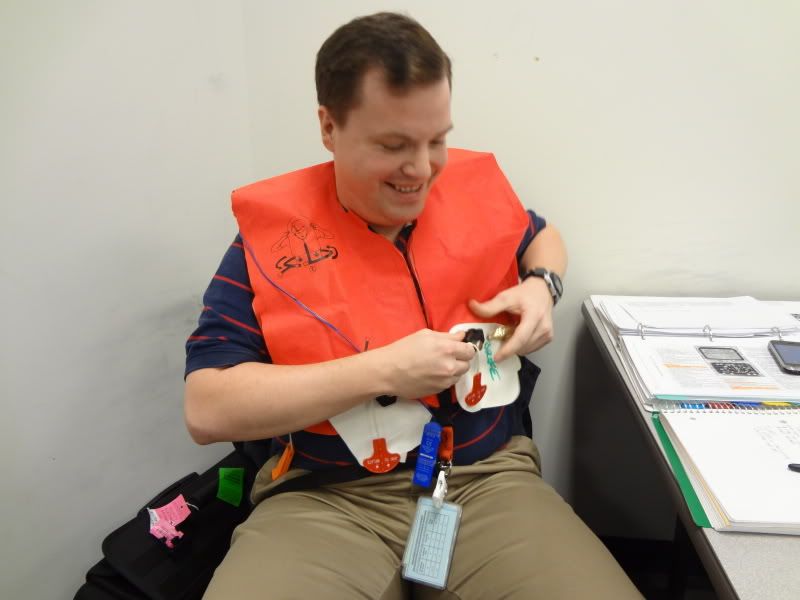
I think this plugs in somewhere, LOL
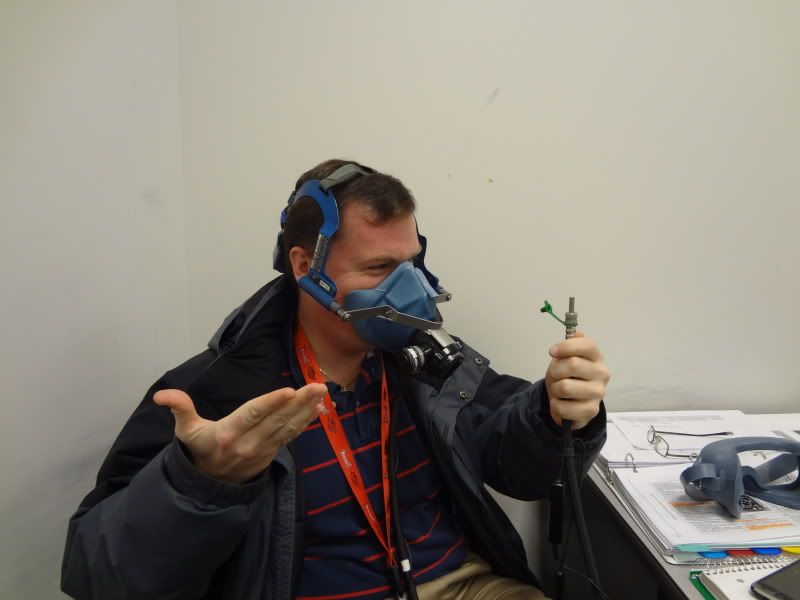
Darth Vader is gonna be so envious of me:

Our Doors Trainer:

From inside the doors trainer:
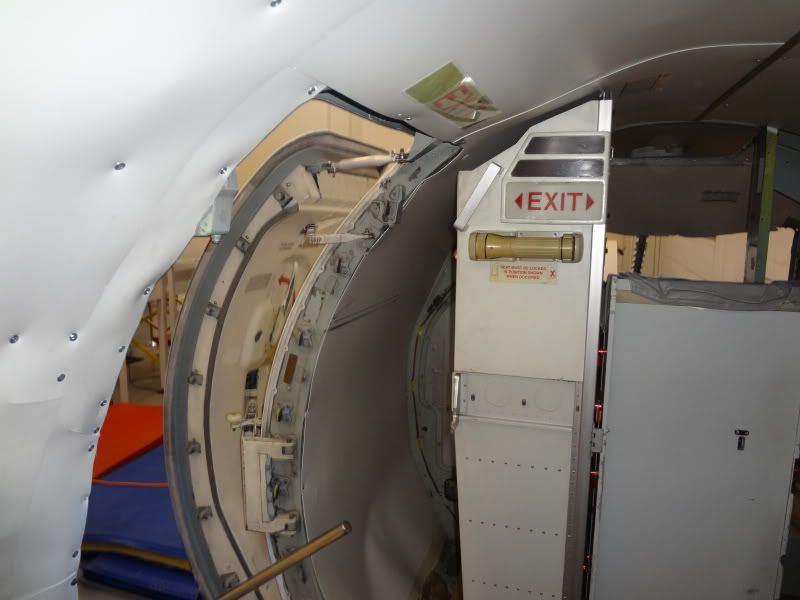
Fire training:
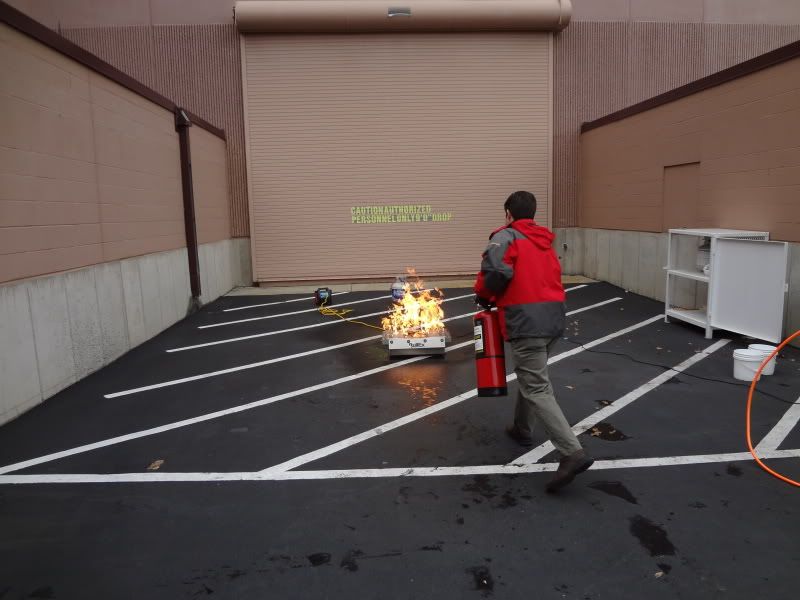
The center of the old Pan Am HQ (Which is our training facility)
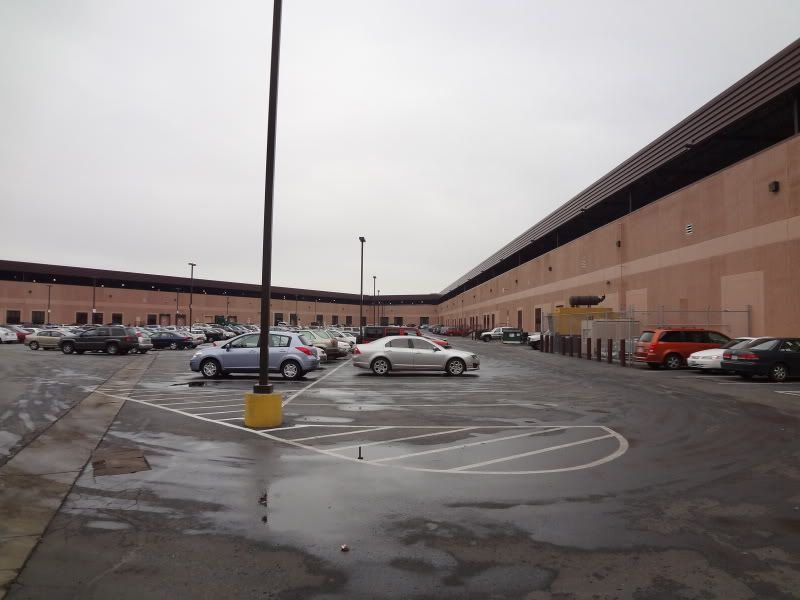

How do you upgrade?
I was very fortunate in that my company became part of a growing regional airline. With that, we merged our pilot groups into one seniority list. After that, the company needed to conduct re-alignment bids to ensure that company staffing levels were met for pilot positions on the various aircraft types the company operates. Being about middle of the pack, I was not suspecting that I would be upgrading (what we call become a Captain) for a few more years. However, due to the re-alignment bid and several other factors dealing with company specific pilot positions, I found I was on the list to upgrade when they published the list in late October. Initially, they said my class date was Nov 21, but after a revision to the bid package (all positions available for pilots to "bid" on), they placed me in the Dec 14th class. My company requires pilots to have a minimum of 2500 total time and a minimum of 1,000 hrs in the Saab (the time in type varies by aircraft - insurance driven). The hours make you eligible for upgrade, but what it boils down to is your seniority position. You can bid on any base and any aircraft and any seat (Captain or First Officer) that you would like to hold. Based on your order of preference, other pilot's bids, and the number of available positions you may or may not get your first choice. I happened to get my first choice, but it was due to the fact that we had so many Saab Captains bid for and awarded Captain positions on the Q400. So that opened up enough positions for me to be awarded my first base of choice and seat of choice (Houston, Captain). The next thing is you continue to fly until a few days before your training starts. This may vary by company, but our Union contract stipulates we must be guaranteed two days off prior to starting long term training.
What is the training process like?
The process they are training us by is different than just a year ago. Due to the realignment bid, they training department is swamped under with new hire training, upgrades, and transitions (people changing from one aircraft type to another). In an effort to alleviate some of the stress on the training department, my class was combined with upgrades and new hires. So we went through the full 4 week ground school. Just a year ago, upgrades were going through a 1 week ground school. This extra time is helpful, but for some of the upgrades some of the information is to detailed for what we see as a simple system. So, we had to remind ourselves that we had new hires in the class who had never even touched the plane before. When we went over aircraft door operations, many of us struggled to stay awake, LOL. As you go through the ground school there are several tests you take along the way. We upgrades had to take the hazmat and security tests along the way. The new hires had one extra week of ground school before joining us. That extra week they covered basic indoc, which covers company operations, procedures, policies, and general operating rules. Basically, its a crash course in 121 operations. At the end of those 4 weeks (5 for the new hires) we had our big systems test. This is a make or break test, anyone not passing must go through retraining and they are given the opportunity to take the test one last time. Fail a second time and you are fired from the company. Today was the day that we took that test. I can proudly say that no one in our class failed, and as a matter of fact no one scored less than a 93 on the test. It was 100 questions long, one point each.
After the systems test, everyone goes through 3 days of systems integration classes. This basically is designed to seal the gap between learning what the systems do and their practical application during operations. We cover our checklists and profiles (specific call-outs and techniques for flying various types of approaches). This is also designed to get you ready for the flight simulator.
The next phase is simulator training. We have 9 sim sessions with 7 of those being for training and 1 a testing event and the last one is a LOFT - Line Oriented Flight Training. The test is a jeopardy event, meaning if you mess up enough you may require re-training and you have one more opportunity to pass or be fired. The LOFT is designed to be the bridge between flying the sim and flying the plane on the line. Simulator training is scheduled for a total of 2 weeks. Prior to our testing event (Proficiency check = PC) we have our oral exams.
After sim training comes OE training. Since we are becoming Captains, this is not IOE, but rather just operational experience (OE) training. New hires go through initial operating experience (IOE) and their required flight hours vary by their total time upon being hired. Upgrades are required to do 20 hours of OE where we fly with Checkairmen who make sure we are doing all procedures correctly, and assist with any deficiencies we may have. At the end of that training, someone from the FAA comes and joines us for a flight. We call that our Fed Ride..... it's similar to doing your initial CFI. The Feds must ride with us and conduct a checkride if it is our first type rating. If the FAA is happy with our performance we are issued a temporary airmen's certificate!
After all of that, we are released back to the line as Captains, and for the new hires, they have a few less requirements but they too will join us on the line.
Hope you enjoyed reading that, and as always feel free to leave any questions or comments. Any and all are welcome.
Bob
P.S. Here are a few pictures:
I'm about to blow it up :-D

I think this plugs in somewhere, LOL

Darth Vader is gonna be so envious of me:

Our Doors Trainer:

From inside the doors trainer:

Fire training:

The center of the old Pan Am HQ (Which is our training facility)


Tuesday, May 24, 2011
This is who we are
As a professional pilot I hold certain responsibilities. Professional pilots have an obligation to ensure the safety of the public through obtaining a high degree of skill and forming sound judgment. We also have a responsibility to other professional pilots who depend on us to follow established practices and policies. Every crew member aboard depends on each other also. We must all have sound leadership skills and form a solid, cohesive, team. This does not mean each crew member must be a leader, but rather possess core traits of a leader. These traits can be learned, but without them the result is nothing short of what can be described as a "sloppy" crew member. This is one reason why former military personnel make great crew members aboard commercial aircraft. Not all former military personnel become pilots, but even their presence in the cabin can have a direct impact on an entire crew if they possess the core leadership traits.
We also have a responsibility to our companies. Obviously they have entrusted us with the responsibilities associated with the safe conduct of flight, but it does not stop there. Just as the police are the first form of governmental contact the public has, crew members are the first form of contact the flying public has with company management. No, we are not the managers of the company, but as pilots we do accept the responsibility to uphold and make decisions which are in the best interest of our company's management team. The direct impact we have on passengers lives is a responsibility we do not downplay. We recognize the reasons passengers are flying. I have often thought of an airport as the only place in the world where you can stand in a terminal and see people walking by who represent every emotional state a human can be in. From the trajic to the happiest of times, not even a hospital can match the diversity of emotional and social reasons why people are there.
What that all means to me is that I have an obligation to my family, passengers, company, and fellow crew members to always observe the highest level of standards possible, never allow myself to be emotionally or physically compromised prior to accepting any flight, maintain the highest level of knowledge and proficiency, and never let any personal needs come before that of my duties and responsibilities as a crewmember.
These are the things that make us who we are. These are the things that drive myself to never settle for anything less than my personal best. Of all the things I have tried to describe, I know I cannot do adequate justice to what this job is all about, but to sum it up with the simple truth: Unhappily, I possess neither that eloquence of diction, that poetry of imagination, nor that brilliance of metaphor to tell you all that they mean to me.
We also have a responsibility to our companies. Obviously they have entrusted us with the responsibilities associated with the safe conduct of flight, but it does not stop there. Just as the police are the first form of governmental contact the public has, crew members are the first form of contact the flying public has with company management. No, we are not the managers of the company, but as pilots we do accept the responsibility to uphold and make decisions which are in the best interest of our company's management team. The direct impact we have on passengers lives is a responsibility we do not downplay. We recognize the reasons passengers are flying. I have often thought of an airport as the only place in the world where you can stand in a terminal and see people walking by who represent every emotional state a human can be in. From the trajic to the happiest of times, not even a hospital can match the diversity of emotional and social reasons why people are there.
What that all means to me is that I have an obligation to my family, passengers, company, and fellow crew members to always observe the highest level of standards possible, never allow myself to be emotionally or physically compromised prior to accepting any flight, maintain the highest level of knowledge and proficiency, and never let any personal needs come before that of my duties and responsibilities as a crewmember.
These are the things that make us who we are. These are the things that drive myself to never settle for anything less than my personal best. Of all the things I have tried to describe, I know I cannot do adequate justice to what this job is all about, but to sum it up with the simple truth: Unhappily, I possess neither that eloquence of diction, that poetry of imagination, nor that brilliance of metaphor to tell you all that they mean to me.
Monday, May 2, 2011
Aniversary
Well, it has been a full year since I first received an invitation to an interview. Every day has brought new experiences, challenges, and even new friendships. Flying for the general public has been, and continues to bring great joy to this pilot. The first day was fun and exciting. After going through 4, 2 hour simulator sessions and a PC (Proficiency Check - explained below) I found myself in the beautiful Northeast. My first flight was from Dulles International to Binghamton, NY. Boy! Did we ever hit the ground running. Here is a copy of my first week of IOE (Initial Operating Experience)
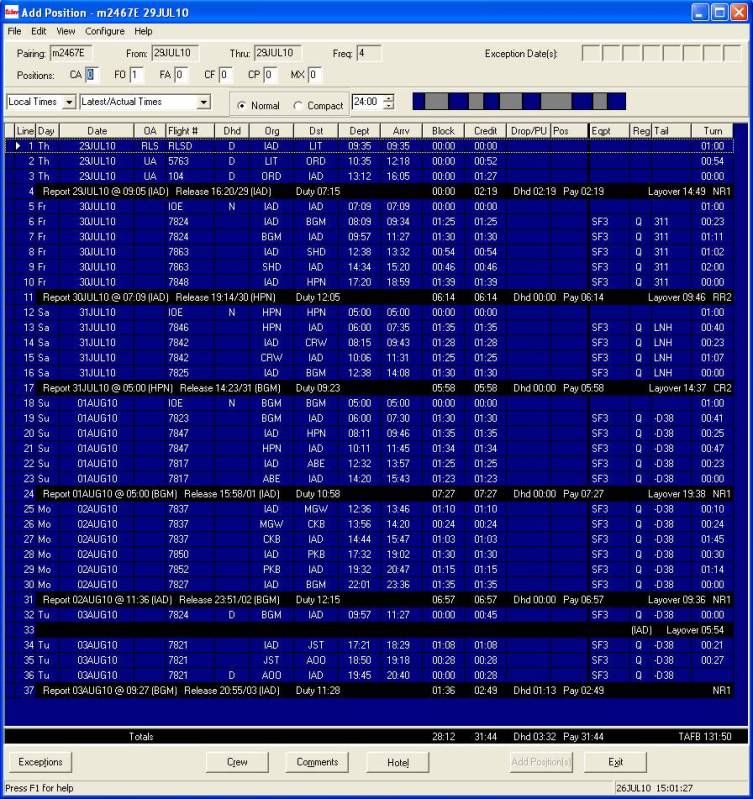
That was obviously a fun week, and it was with it's maintenance issues, scheduling conflicts, and passenger issues. I experienced my first medical emergency on my third day. The first time to step in the cockpit (other than the simulator) gave me the same feeling as when I completed a checkride. You spend a lot of time studying, training, and then you get to see the real deal. Definitely a rush. I couldn't help but take a few pictures of my first time in the plane - just as I have always done.
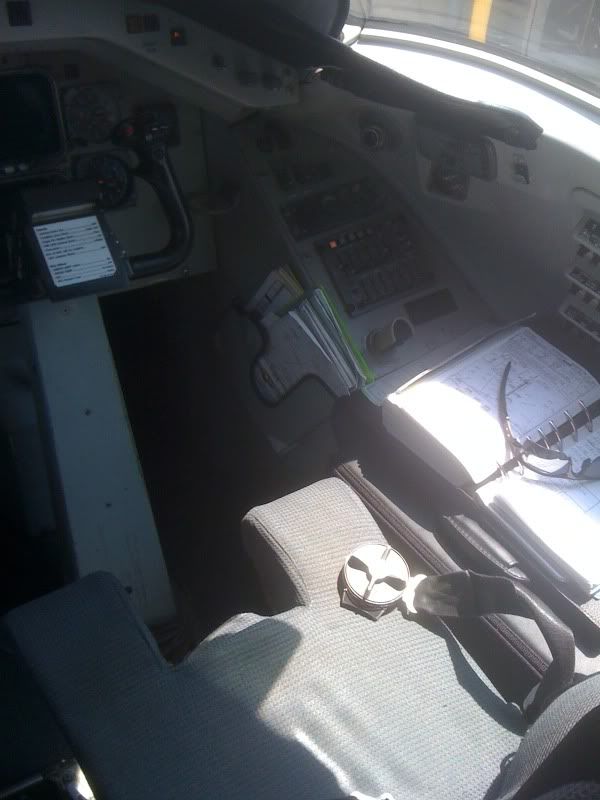
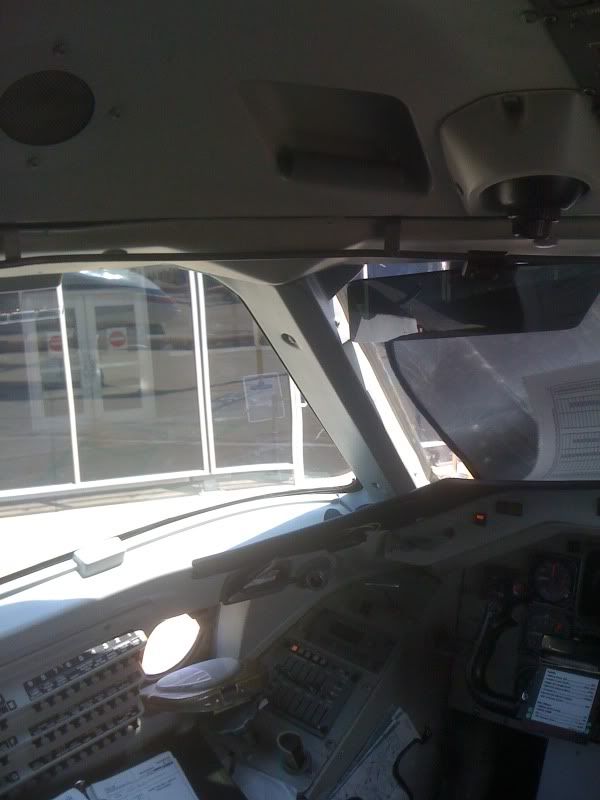
With some of my downtime, and new travel privileges, I enjoyed a week of downtime by visiting the aviation holy land:


Once I finished my IOE, I was given 5 GDO's (Guaranteed Day's off). If you are going to move to your base, these are the days you do it. If you're going to commute, as I continue to do, these are your days to get you SIDA badge - Company "V" file, send in your IOE paperwork, ect... or you can sit on your a$$. They are your vacation days that you earn during your first year.
Once in Houston, I was given a build-up line for my first month off of IOE. A build-up line involves taking flights (we call them trips) that are in open time and assigning them to you so you have a complete schedule for the month. Open time is just as it sounds - unassigned flights. After the first month I was fortunate enough to become a line holder. A line holder is someone who has enough seniority to bid for available schedules, and be awarded one. A reserve pilot is one who can not "hold" a regular line (think of it as a normal schedule). A reserve pilot will be assigned trips on an as needed basis. This may be to fill open time, fill in for a sick pilot, fill in for one who is taking vacation, ect...
Since starting with my first line in August, I have been flying as much as regulations permit. With all times included, I have reached the company time requirements for upgrade to Captain. Right now I am just waiting for the award (as we call it). The schedules I choose are normally afternoons. The time we are supposed to report for duty is called our "Show Time", for obvious reasons. Nevertheless, since I live in Arkansas and fly in Texas I try to find "commutable" lines. These are the lines (schedules) that start late on the first day and finish early on the last day. This gives you the chance to fly in to work on your first day, and fly home on the same day you finish work. Thanks to the kind pilots at ExpressJet, I have had a fairly easy commute.
So that has pretty much been my first year. I've shared some of my experiences in other posts both on here and on the AOPA forums, so no need to be redundant. Just to finish this post off. In case you ever wondered what our training was like, here is a short synopsis.
All new hires go to Training Center at MEM (Memphis International Airport). They put us up in a nearby hotel where we lived for roughly six weeks. Because Memphis is so close, I went home most weekends. Then we were randomly paired together with our classmates. There were 10 in my class (one of the smallest they had). Each pair of students went to simulator training facilities in Houston (Hobby) or St. Louis. I was again fortunate to go to St. Louis as my oldest sister lives about 3 miles from Lambert Field. There we spent a week going through a very structured syllabus. The instructor's had enough freedom to add challenges and ensure you always stayed one step behind the plane. Doing so requires you either adapt and quickly learn to keep pace with the new plane, or you go home. No one in my class failed (all but 4 are now in Houston with me). At the end of simulator training, you are either flown to the other simulator facility or a different sim instructor is flown in to your current sim facility. This instructor gives you a proficiency check, and for us that is the same as a checkride. We officially refere to them as jeopardy training events, since two TP's (train to proficiency) result in a failed checkride... and a failed checkride results in termination. To expound on TP's a little more... Should you not follow company procedures for specific things (say configuring the airplane during a single engine circling approach) the sim instructor must pause the PC and provide immediate remedial training. One more chance to get things right or you are done. After the PC, the training department releases you to the line. Yes, that is yet another use for that term, LOL. A line pilot is simply a pilot who is flying in the field, as opposed to being a management pilot (such as a training director).
Once on the line, you are current for 1 year. At the end of that year you must go back to the simulator for another PC. Several companies, mine included, require that pilots go back to the simulator every 6 months. When this is not a PC the sim session is a PT (proficiency training). A PT is a really great idea, because it is the same as if a pilot from a local GA airport had an instructor go fly with them to identify any weaknesses and/or just improve upon skills.
I hope you enjoyed that or at least enjoyed the little insight into training. As always if you have any questions please feel free to ask. If I don't know the answer, I will definitely find out.
Have a great one,
Bob

That was obviously a fun week, and it was with it's maintenance issues, scheduling conflicts, and passenger issues. I experienced my first medical emergency on my third day. The first time to step in the cockpit (other than the simulator) gave me the same feeling as when I completed a checkride. You spend a lot of time studying, training, and then you get to see the real deal. Definitely a rush. I couldn't help but take a few pictures of my first time in the plane - just as I have always done.


With some of my downtime, and new travel privileges, I enjoyed a week of downtime by visiting the aviation holy land:


Once I finished my IOE, I was given 5 GDO's (Guaranteed Day's off). If you are going to move to your base, these are the days you do it. If you're going to commute, as I continue to do, these are your days to get you SIDA badge - Company "V" file, send in your IOE paperwork, ect... or you can sit on your a$$. They are your vacation days that you earn during your first year.
Once in Houston, I was given a build-up line for my first month off of IOE. A build-up line involves taking flights (we call them trips) that are in open time and assigning them to you so you have a complete schedule for the month. Open time is just as it sounds - unassigned flights. After the first month I was fortunate enough to become a line holder. A line holder is someone who has enough seniority to bid for available schedules, and be awarded one. A reserve pilot is one who can not "hold" a regular line (think of it as a normal schedule). A reserve pilot will be assigned trips on an as needed basis. This may be to fill open time, fill in for a sick pilot, fill in for one who is taking vacation, ect...
Since starting with my first line in August, I have been flying as much as regulations permit. With all times included, I have reached the company time requirements for upgrade to Captain. Right now I am just waiting for the award (as we call it). The schedules I choose are normally afternoons. The time we are supposed to report for duty is called our "Show Time", for obvious reasons. Nevertheless, since I live in Arkansas and fly in Texas I try to find "commutable" lines. These are the lines (schedules) that start late on the first day and finish early on the last day. This gives you the chance to fly in to work on your first day, and fly home on the same day you finish work. Thanks to the kind pilots at ExpressJet, I have had a fairly easy commute.
So that has pretty much been my first year. I've shared some of my experiences in other posts both on here and on the AOPA forums, so no need to be redundant. Just to finish this post off. In case you ever wondered what our training was like, here is a short synopsis.
All new hires go to Training Center at MEM (Memphis International Airport). They put us up in a nearby hotel where we lived for roughly six weeks. Because Memphis is so close, I went home most weekends. Then we were randomly paired together with our classmates. There were 10 in my class (one of the smallest they had). Each pair of students went to simulator training facilities in Houston (Hobby) or St. Louis. I was again fortunate to go to St. Louis as my oldest sister lives about 3 miles from Lambert Field. There we spent a week going through a very structured syllabus. The instructor's had enough freedom to add challenges and ensure you always stayed one step behind the plane. Doing so requires you either adapt and quickly learn to keep pace with the new plane, or you go home. No one in my class failed (all but 4 are now in Houston with me). At the end of simulator training, you are either flown to the other simulator facility or a different sim instructor is flown in to your current sim facility. This instructor gives you a proficiency check, and for us that is the same as a checkride. We officially refere to them as jeopardy training events, since two TP's (train to proficiency) result in a failed checkride... and a failed checkride results in termination. To expound on TP's a little more... Should you not follow company procedures for specific things (say configuring the airplane during a single engine circling approach) the sim instructor must pause the PC and provide immediate remedial training. One more chance to get things right or you are done. After the PC, the training department releases you to the line. Yes, that is yet another use for that term, LOL. A line pilot is simply a pilot who is flying in the field, as opposed to being a management pilot (such as a training director).
Once on the line, you are current for 1 year. At the end of that year you must go back to the simulator for another PC. Several companies, mine included, require that pilots go back to the simulator every 6 months. When this is not a PC the sim session is a PT (proficiency training). A PT is a really great idea, because it is the same as if a pilot from a local GA airport had an instructor go fly with them to identify any weaknesses and/or just improve upon skills.
I hope you enjoyed that or at least enjoyed the little insight into training. As always if you have any questions please feel free to ask. If I don't know the answer, I will definitely find out.
Have a great one,
Bob
Saturday, February 12, 2011
Nothing but pictures
I'm a little pooped after the last post I made here, but I have some photos that I'd love to share and give just a short background on.
Here are a couple pictures of a recent encounter we had with moderate rime ice:

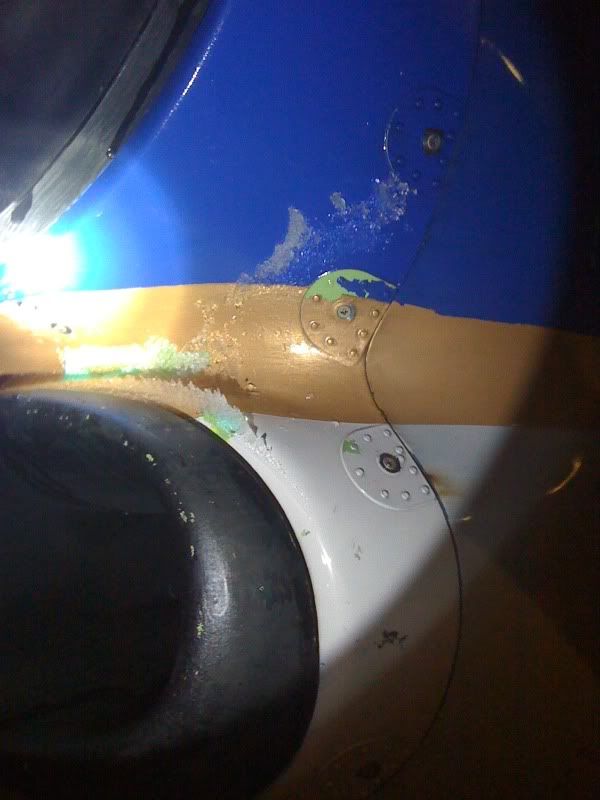
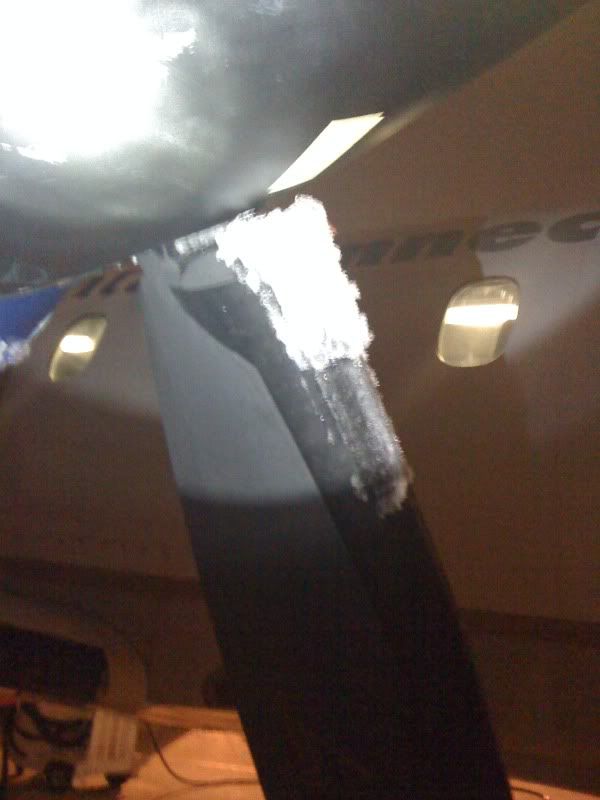


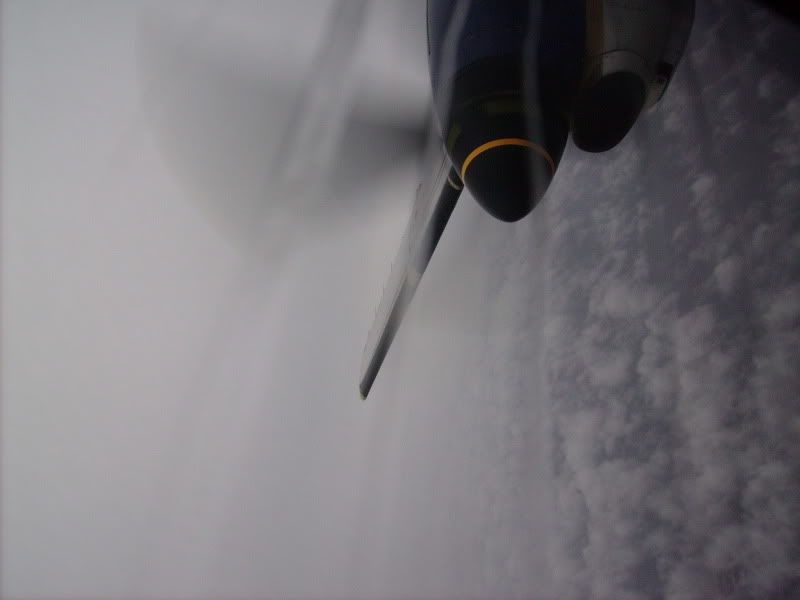
An unsuccessful attempt to de-ice:
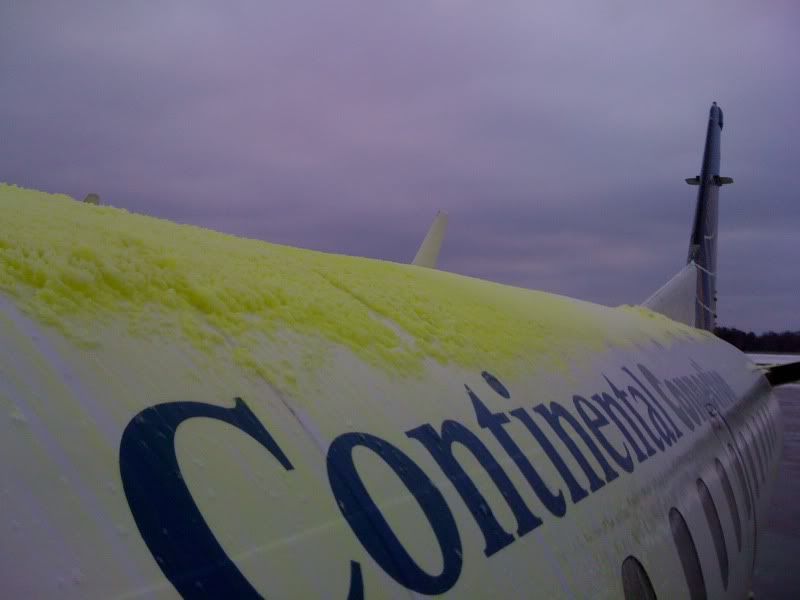
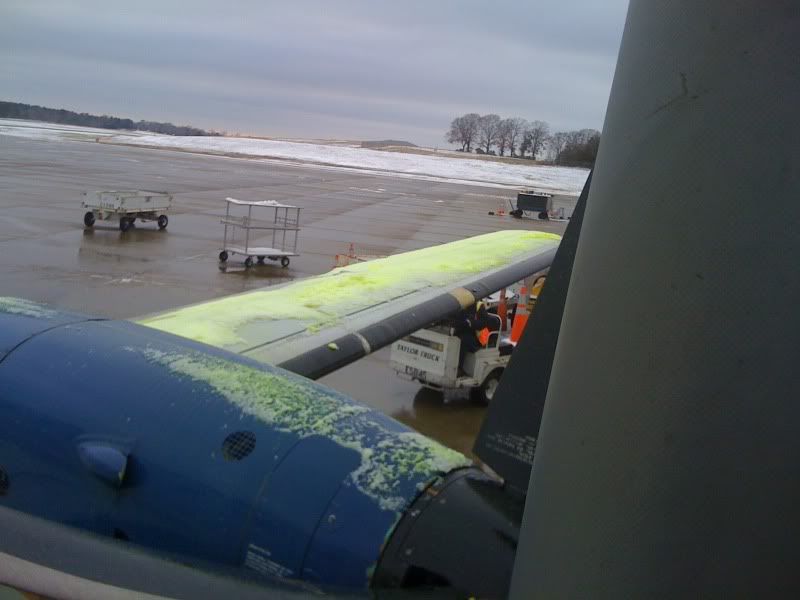
A few neat pictures of winter storm clouds:
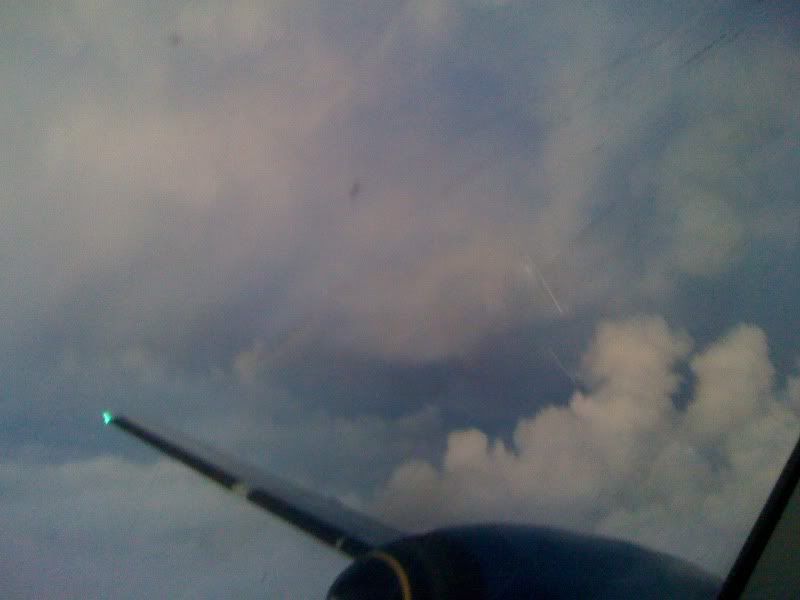

A few Pictures of Houston:

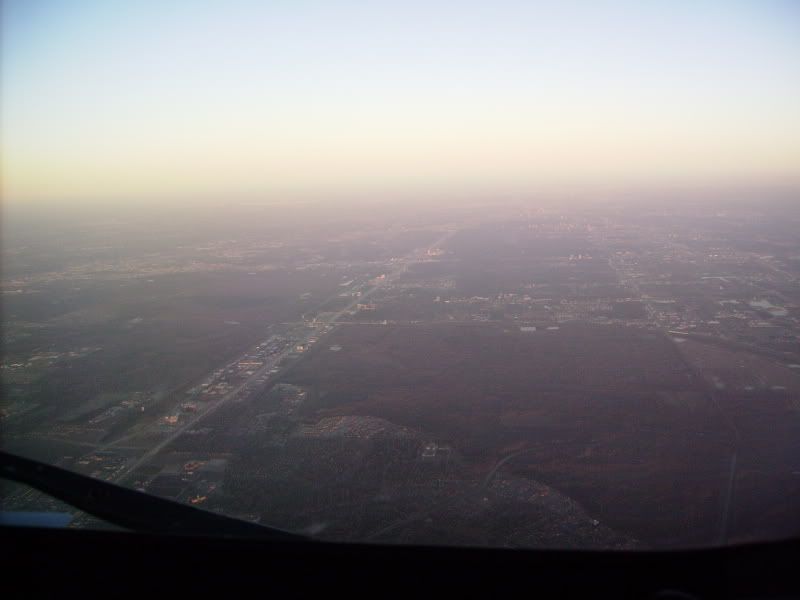
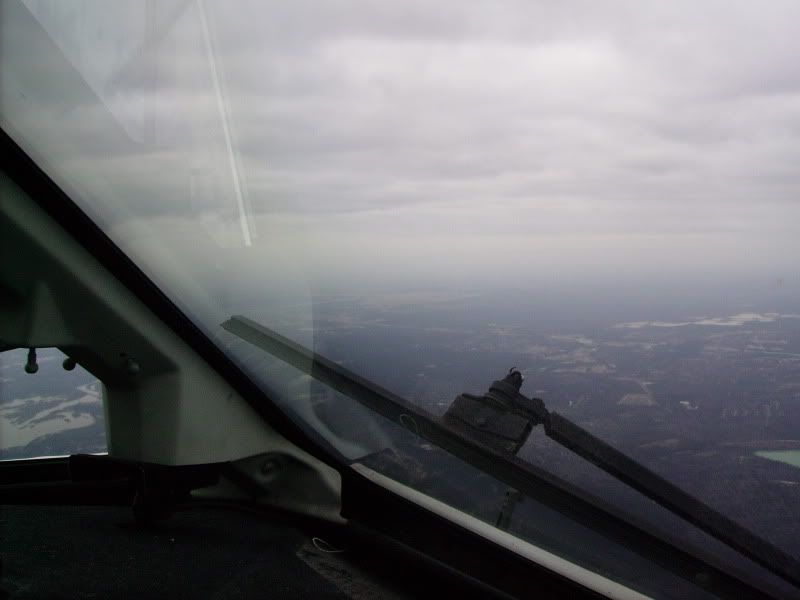
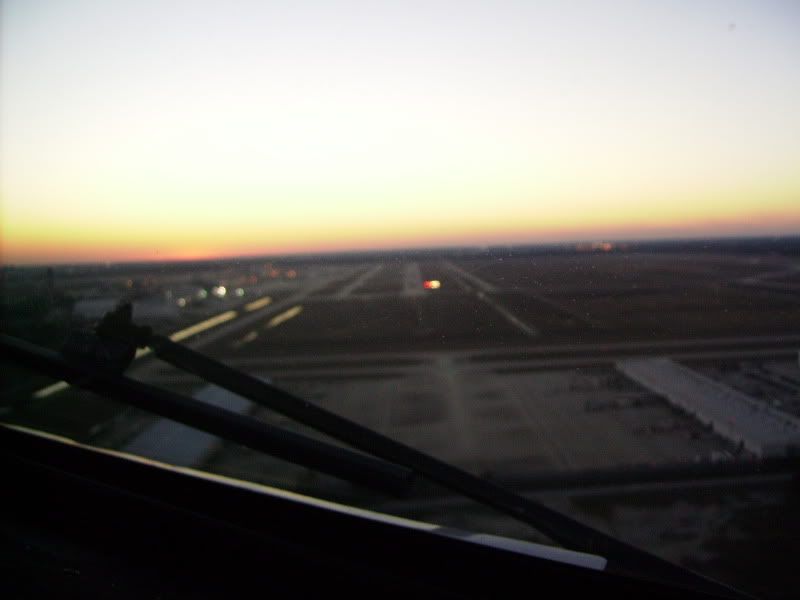
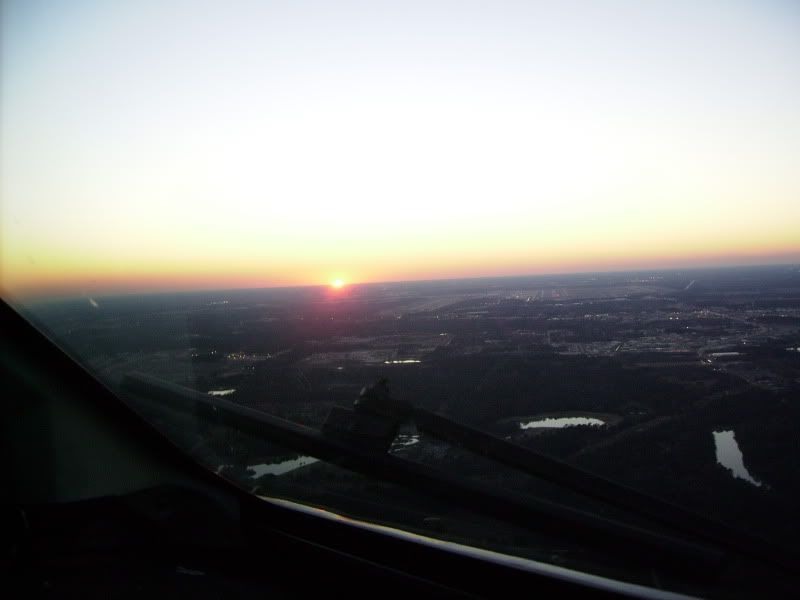
This was a beautiful day:
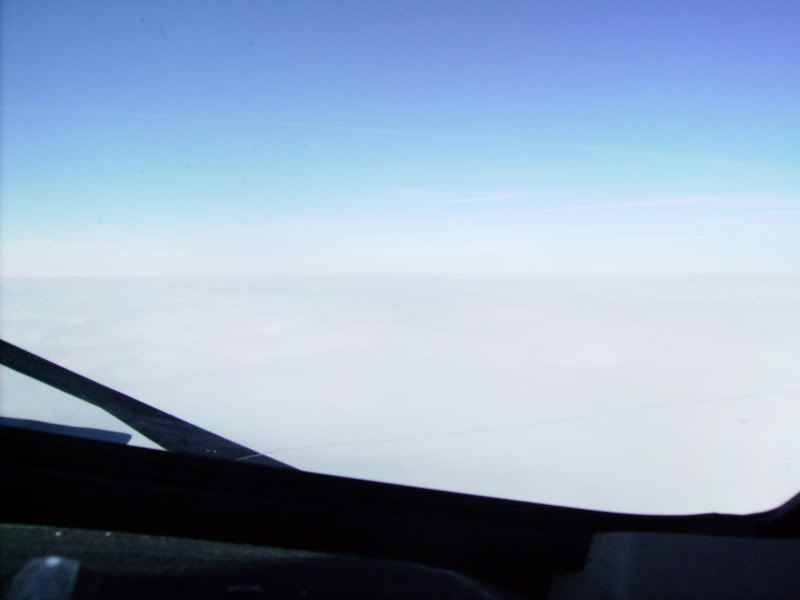
A few to end with:
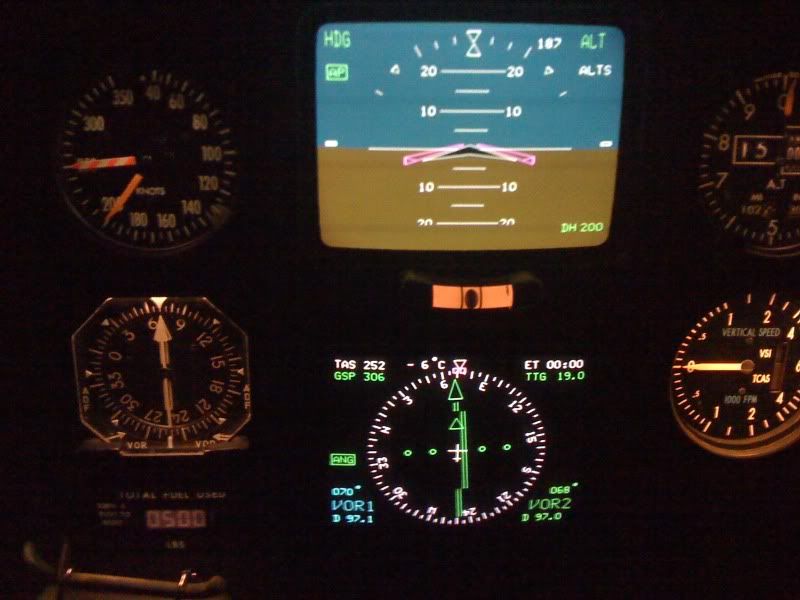


Here are a couple pictures of a recent encounter we had with moderate rime ice:






An unsuccessful attempt to de-ice:


A few neat pictures of winter storm clouds:


A few Pictures of Houston:





This was a beautiful day:

A few to end with:



A little overdue
We recently had a huge revision to our procedures and flows. Flows are tasks performed from memory designed to quickly configure the aircraft so either more attention may be spent on other things during a critical phase, or accomplished prior to completing a checklist in order to expedite the process. We are gearing up for our merger, and part of that process is integrating procedures between the companies for similar aircraft. In light of that, I have been spending much of my free time studying and familiarizing myself with out new procedures.
For those out there who may be considering a Career with an airline, here are some thoughts that I have about that and a few things I've learned along the way that may be useful.
Being an airline pilot can be one of the world's best jobs. First year salaries range from $25,000 to over $50,000 per year. Pilots who have worked for a company for 10 years could have annual earnings close to $300,000. It is possible for a pilot to have even higher earnings during the course of a career. A pilot might only work 8 days in a month. They never have to take their work "home" with them; their job is finished when they leave the airplane. Pilots have retirement and benefit packages that exceed what most other professionals earn. They get free or reduced rate travel. They get reduced rate hotel and car rentals. Pilots even have the time off to use these fringe benefits. Most pilots love their jobs, to the point that they even will fly for fun on their days off. Sounds great, right? Well, there is another side of the coin.
While some pilots do earn those high salaries, most pilots at major airlines earn around $100,000 per year. Still, not bad, however you have to consider that very few pilots actually work for major airlines. Unlike other professions, which can be reasonably assured that they will get a job once they have finished school, etc., the majority of qualified pilots are not able to procure jobs with a major carrier.
How many days a pilot works depends on a number of factors, including which company a pilot works for and how long the pilot has worked for that company. Pilots can work as few a 8 days in a month, to as many as 20. While pilots at a major airline might work 14 days in a month, you must keep in mind that they are not coming home from work on those 14 days. They are actually away from their homes and families half of every month, or more. This is a high price to pay. It would not be physically possible to work much more. Pilots are already living out of their suitcases half their lives.
While pilots do not take their work home with them, they are required to be prepared for tests.. Most pilots take a checkride twice a year. This requires some home study. In the event of failure a pilot could find him or herself out of a job. In addition, pilots are expected to maintain currency in new techniques and procedures, and keep their charts up to date.
Another drawback is the high cost of becoming qualified to be a pilot. A pilot either has to go through the military, which is an 8 year commitment after pilot training, or pay for that training him or herself. In addition to needing a bachelor's degree (in any subject), a pilot needs a lot of intensive training in the field of aviation itself. This is expensive, especially if you consider that there is a fairly good chance that a pilot will never work for an airline.
A pilot also needs to be in good physical condition. Pilots have to have a physical examination once a year or every 6 months, depending on their age. A pilot could be out of a job if a health problem is discovered. In addition, pilots are subject to regular drug and alcohol tests. If you have ever had a problem with drugs or alcohol you need to choose a different profession. Furthermore, your driving record is scrutinized, and any felony convictions are disqualifying. In addition to the physical requirements, a pilot must be mentally fit to perform the job. Unlike most other professions, many people's lives depend on the pilot's ability to stay calm and collected while solving problems.
Finally, a person seriously considering a career in the airline industry should be aware that the airline business does not offer much in terms of job security. Airlines that once seemed to be invincible have gone out of business, like Pan Am and Eastern airlines. The pilots of those carriers had to seek employment elsewhere. If they took a job as a pilot for a different airline, they started again at the bottom. Eventually they may move back up to Captain, but they are not given any special priority over anyone else who was hired at the same time. All promotions within a company are based on seniority (years of service) with that company. Previous experience might help someone get hired, but that is all.
Furthermore, there is no guarantee of advancement at any airline. If you get hired at the right time, you could be a Captain in as little as one to three years, while those hired just six months later might spend five years or more as a First Officer before they even get a chance to become Captains.
All this needs to be considered if you are thinking of being a pilot.
What does a pilot need to know?
Well, of course a pilot needs to be able to fly an airplane. Flying an airplane is nothing like driving a car. It requires a very high level of skill. It literally takes years to acquire the skills necessary to fly commercial jets. Furthermore, a pilot is always working on his or her skills; there is always room for improvement. Most people think that this is all there is to it, once you have acquired the skill to control the airplane you can safely fly it. While these skills are impressive, they are only the tip of the iceberg for a professional pilot. Many pilots will tell you that the skill of flying an airplane is only 5% of what it takes.
What else is there?
A pilot must be very knowledgeable on a variety of subjects. To be a professional pilot you must:
1) Understand theory of flight: This requires a fundamental understanding of physics. While there is no requirement to understand mathematics above algebra (although it helps if you do understand higher math), you do have to be able to understand and apply the concepts of physics. A pilot must understand laws of motion, mass, inertia, pressure, temperature, fluids and gasses. This is the only way to understand aerodynamics (subsonic and supersonic), aircraft performance (including aircraft loading), hydroplaning and system operations and limitations.
2) Understand meteorology: This, too, is rooted in physics. A pilot must not only be able to interpret the weather that he or she is provided, but must also be able to make judgments as to the validity of the weather forecasts themselves. Often the pilot is the only one that can observe weather phenomena, and must be able to report what he or she is seeing accurately as well as make a quick analysis of the conditions. This includes how the changes may affect the weather forecast itself and how those changes may affect the safety of the flight.
3) Understand aircraft systems: All machines use the principles of physics to operate, and so a pilot must understand the areas of physics that apply. In addition, a pilot must understand aircraft maintenance, otherwise there is no way to tell if the mechanics did their job right. It is not enough to trust the mechanic; your life, and the lives of your passengers, are at stake.
A pilot must fully understand how their engines operate (be they turboprop or not), as well as how all of the various components on the engine function and interact. The engine is not the only mechanical component, however. The pilot must have a full understanding of electrical systems (including all of the components), the hydraulic systems and the pneumatic systems. In addition, the pilot must be familiar with the cable and pulley systems that may be incorporated to operate flight controls, etc. Without a thorough understanding of these components there would be no way to trouble shoot a problem that occurred in flight. (Remember, the mechanic does not fly with you).
The pilot must also understand metal bending limits, material fatigue, etc. In this way the pilot can determine if there is a possible structural problem, and if there is, how serious it might be.
4) Understand navigation: Navigation is a broad subject, with many important aspects. There is much more to navigation than simply getting from one point to the next. First, a pilot must understand how maps and charts are constructed in order to properly interpret them. There are many ways of making charts, and each has advantages as well as pitfalls. Charts made for pilots to land in poor weather have their own sets of limitations and problems. A pilot must fully understand the safety margins that are incorporated into charts, and how they affect each phase of flight. There are times that an altitude or course deviation of just 100 feet could be dangerous. A pilot who does not understand charting will be flying inefficiently at best, and could even risk a crash.
While it is true that much of today's enroute navigation uses airborne computer equipment, what if it fails? A pilot must be able to navigate via dead reckoning, celestial, or any other means of navigation that would enable the flight to be completed safely. There are times when a pilot will navigate using only the chart and visible landmarks, and other times when a pilot will use ground based radio signals. The pilot is responsible for understanding the advantages and disadvantages of each type of navigation used, and knowing when to use them.
To be able to navigate also requires a thorough understanding of geography. Furthermore, a pilot must be familiar with international laws and current political situations in various countries. In an emergency, a pilot must know which countries are hostile or unstable, and which are safe. This requires staying abreast of current world events.
Part of navigation also involves the weather. Pilots will often have to deviate from their normal course to avoid dangerous weather conditions. Sometimes this is not possible, and the pilot must be able to make decisions based on the known risks.
5) Regulations and air traffic control: A pilot must be familiar with all the regulations that may affect his or her flight. There are literally hundreds of regulations that must be complied with for every flight. These regulations are written by legal professionals, therefore, a pilot must be able to read and understand legal documents. Most of these regulations come from the Federal Aviation Administration (FAA), but a pilot is expected to comply with the regulations of various other government bodies, both Federal and State. In addition, pilots flying Internationally are governed by International law as well as the laws that are specific to the country to which they are operating.
A large section of these rules pertains to the carriage of hazardous materials. A pilot must understand the properties of various chemicals and other agents in order to be able to comply with these rules.
Air traffic control involves many regulations. In addition, there are books of procedures that air traffic controllers must follow. The pilot must also be familiar with these procedures. In the event the controller makes an error, it is the pilot's responsibility to recognize that error and to then take what ever action is necessary to complete the flight safely. In additions to the procedures, the pilot must understand the limits of the controller's radar and radios. Radios include the communication radios as well as ground based radio navigation aids. This requires an understanding of electromagnetic wave signals, and how the different wave lengths of radio and light waves can be affected by various phenomena.
6) Pilots must have some knowledge of physiology:. While a pilot is not expected to go to medical school, the FAA does expect a pilot to be able to recognize physical problems that may affect him or herself or any passengers. The pilot also has to know how to prevent these problems in the first place. In addition, the pilot must understand the various illusions and sensations that occur in flight that could adversely affect safety.
Pilots also need to study past aviation accidents so they can better understand the human factors that may have contributed to them.
This is only a partial list. Each of these subjects can be studied in depth. In fact, most of these subjects are available as Doctoral programs in our universities. While a pilot is not expected to have multiple doctorate degrees, he or she is expected to thoroughly understand these subjects. Without such understanding, the pilot cannot operate safely. Flying an airplane requires risk management, and risk management is not possible without fully understanding all the principles involved.
Jobs outside of Major Airlines
Flying for a major airline is not the only choice. Although airline flying is the top of the field in terms of salary and benefits, there are other ways to make a living as a pilot. Some of these are corporate aviation (flying company airplanes), agricultural flying (crop dusting), and you could fly full time in the military. If you like to teach, you can teach people to fly for a living. This can be at the primary level up through airline instructing. Pay scales for all these jobs vary, as do working conditions. You can expect salary ranges of $20,000 through $80,000 per year.
If you want to be involved in aviation, but being a professional pilot is not for you, there are many other jobs within aviation. You can work as an attorney practicing aviation law or as a doctor in aero-medicine. Other possible fields include meteorology, air traffic control, business management, aircraft mechanics, etc. While you do not need to be a pilot to do these type of jobs, being a pilot might provide more insight into the various opportunities available to you.
After reading all this, if you still feel aviation is the career for you, than you are ready for the next question.
How do you start?
First of all, the younger you start the better. If you are still in high school, now is the time to start. If you're older, that's O.K., but do not procrastinate.
If you have never flown an airplane, go out to the local airport and take an introductory ride. These are usually fairly inexpensive, and you will get a chance to fly the airplane. If you don't like it, stop here.
If you're like most people, you will enjoy that first ride. Although the flight school will probably try to persuade you to start flying lessons right away, it is better if you don't. Instead, see if they offer a ground school course. If they don't have one themselves, they may know of one. Ground school is where you will begin learning the basics of the subjects mentioned above. If the school does not offer ground school, or if the next ground school course does not start for several months, pick up some books and get started on your own.
There are quite a few books that are written for beginners. One of the better ones is the Student Pilots Flight Manual by Kershner. The FAA also has a good collection of books. You can visit a section of the FAA's online library here: http://www.faa.gov/library/manuals/aviation/
Now comes the real test. If you enjoy what you are studying in ground school (or in the books) you will probably enjoy flying as a career. Everyone likes flying the airplane, but being a professional pilot requires a lot of study. If you don't enjoy the subjects, flying is not for you.
While most of todays airline pilots came from the military, it is not the only route. By earning your flying ratings and acquiring the experience through private lessons and later by working as a pilot for small companies, you can get the experience you need to apply to a carrier.
Whether you choose the military or civilian route, you should learn to fly privately first. This start will help you in military flight school, if you choose that route, so you can't lose by taking lessons. Get out to the airport and get started. Your worst enemy is procrastination.
For those out there who may be considering a Career with an airline, here are some thoughts that I have about that and a few things I've learned along the way that may be useful.
Being an airline pilot can be one of the world's best jobs. First year salaries range from $25,000 to over $50,000 per year. Pilots who have worked for a company for 10 years could have annual earnings close to $300,000. It is possible for a pilot to have even higher earnings during the course of a career. A pilot might only work 8 days in a month. They never have to take their work "home" with them; their job is finished when they leave the airplane. Pilots have retirement and benefit packages that exceed what most other professionals earn. They get free or reduced rate travel. They get reduced rate hotel and car rentals. Pilots even have the time off to use these fringe benefits. Most pilots love their jobs, to the point that they even will fly for fun on their days off. Sounds great, right? Well, there is another side of the coin.
While some pilots do earn those high salaries, most pilots at major airlines earn around $100,000 per year. Still, not bad, however you have to consider that very few pilots actually work for major airlines. Unlike other professions, which can be reasonably assured that they will get a job once they have finished school, etc., the majority of qualified pilots are not able to procure jobs with a major carrier.
How many days a pilot works depends on a number of factors, including which company a pilot works for and how long the pilot has worked for that company. Pilots can work as few a 8 days in a month, to as many as 20. While pilots at a major airline might work 14 days in a month, you must keep in mind that they are not coming home from work on those 14 days. They are actually away from their homes and families half of every month, or more. This is a high price to pay. It would not be physically possible to work much more. Pilots are already living out of their suitcases half their lives.
While pilots do not take their work home with them, they are required to be prepared for tests.. Most pilots take a checkride twice a year. This requires some home study. In the event of failure a pilot could find him or herself out of a job. In addition, pilots are expected to maintain currency in new techniques and procedures, and keep their charts up to date.
Another drawback is the high cost of becoming qualified to be a pilot. A pilot either has to go through the military, which is an 8 year commitment after pilot training, or pay for that training him or herself. In addition to needing a bachelor's degree (in any subject), a pilot needs a lot of intensive training in the field of aviation itself. This is expensive, especially if you consider that there is a fairly good chance that a pilot will never work for an airline.
A pilot also needs to be in good physical condition. Pilots have to have a physical examination once a year or every 6 months, depending on their age. A pilot could be out of a job if a health problem is discovered. In addition, pilots are subject to regular drug and alcohol tests. If you have ever had a problem with drugs or alcohol you need to choose a different profession. Furthermore, your driving record is scrutinized, and any felony convictions are disqualifying. In addition to the physical requirements, a pilot must be mentally fit to perform the job. Unlike most other professions, many people's lives depend on the pilot's ability to stay calm and collected while solving problems.
Finally, a person seriously considering a career in the airline industry should be aware that the airline business does not offer much in terms of job security. Airlines that once seemed to be invincible have gone out of business, like Pan Am and Eastern airlines. The pilots of those carriers had to seek employment elsewhere. If they took a job as a pilot for a different airline, they started again at the bottom. Eventually they may move back up to Captain, but they are not given any special priority over anyone else who was hired at the same time. All promotions within a company are based on seniority (years of service) with that company. Previous experience might help someone get hired, but that is all.
Furthermore, there is no guarantee of advancement at any airline. If you get hired at the right time, you could be a Captain in as little as one to three years, while those hired just six months later might spend five years or more as a First Officer before they even get a chance to become Captains.
All this needs to be considered if you are thinking of being a pilot.
What does a pilot need to know?
Well, of course a pilot needs to be able to fly an airplane. Flying an airplane is nothing like driving a car. It requires a very high level of skill. It literally takes years to acquire the skills necessary to fly commercial jets. Furthermore, a pilot is always working on his or her skills; there is always room for improvement. Most people think that this is all there is to it, once you have acquired the skill to control the airplane you can safely fly it. While these skills are impressive, they are only the tip of the iceberg for a professional pilot. Many pilots will tell you that the skill of flying an airplane is only 5% of what it takes.
What else is there?
A pilot must be very knowledgeable on a variety of subjects. To be a professional pilot you must:
1) Understand theory of flight: This requires a fundamental understanding of physics. While there is no requirement to understand mathematics above algebra (although it helps if you do understand higher math), you do have to be able to understand and apply the concepts of physics. A pilot must understand laws of motion, mass, inertia, pressure, temperature, fluids and gasses. This is the only way to understand aerodynamics (subsonic and supersonic), aircraft performance (including aircraft loading), hydroplaning and system operations and limitations.
2) Understand meteorology: This, too, is rooted in physics. A pilot must not only be able to interpret the weather that he or she is provided, but must also be able to make judgments as to the validity of the weather forecasts themselves. Often the pilot is the only one that can observe weather phenomena, and must be able to report what he or she is seeing accurately as well as make a quick analysis of the conditions. This includes how the changes may affect the weather forecast itself and how those changes may affect the safety of the flight.
3) Understand aircraft systems: All machines use the principles of physics to operate, and so a pilot must understand the areas of physics that apply. In addition, a pilot must understand aircraft maintenance, otherwise there is no way to tell if the mechanics did their job right. It is not enough to trust the mechanic; your life, and the lives of your passengers, are at stake.
A pilot must fully understand how their engines operate (be they turboprop or not), as well as how all of the various components on the engine function and interact. The engine is not the only mechanical component, however. The pilot must have a full understanding of electrical systems (including all of the components), the hydraulic systems and the pneumatic systems. In addition, the pilot must be familiar with the cable and pulley systems that may be incorporated to operate flight controls, etc. Without a thorough understanding of these components there would be no way to trouble shoot a problem that occurred in flight. (Remember, the mechanic does not fly with you).
The pilot must also understand metal bending limits, material fatigue, etc. In this way the pilot can determine if there is a possible structural problem, and if there is, how serious it might be.
4) Understand navigation: Navigation is a broad subject, with many important aspects. There is much more to navigation than simply getting from one point to the next. First, a pilot must understand how maps and charts are constructed in order to properly interpret them. There are many ways of making charts, and each has advantages as well as pitfalls. Charts made for pilots to land in poor weather have their own sets of limitations and problems. A pilot must fully understand the safety margins that are incorporated into charts, and how they affect each phase of flight. There are times that an altitude or course deviation of just 100 feet could be dangerous. A pilot who does not understand charting will be flying inefficiently at best, and could even risk a crash.
While it is true that much of today's enroute navigation uses airborne computer equipment, what if it fails? A pilot must be able to navigate via dead reckoning, celestial, or any other means of navigation that would enable the flight to be completed safely. There are times when a pilot will navigate using only the chart and visible landmarks, and other times when a pilot will use ground based radio signals. The pilot is responsible for understanding the advantages and disadvantages of each type of navigation used, and knowing when to use them.
To be able to navigate also requires a thorough understanding of geography. Furthermore, a pilot must be familiar with international laws and current political situations in various countries. In an emergency, a pilot must know which countries are hostile or unstable, and which are safe. This requires staying abreast of current world events.
Part of navigation also involves the weather. Pilots will often have to deviate from their normal course to avoid dangerous weather conditions. Sometimes this is not possible, and the pilot must be able to make decisions based on the known risks.
5) Regulations and air traffic control: A pilot must be familiar with all the regulations that may affect his or her flight. There are literally hundreds of regulations that must be complied with for every flight. These regulations are written by legal professionals, therefore, a pilot must be able to read and understand legal documents. Most of these regulations come from the Federal Aviation Administration (FAA), but a pilot is expected to comply with the regulations of various other government bodies, both Federal and State. In addition, pilots flying Internationally are governed by International law as well as the laws that are specific to the country to which they are operating.
A large section of these rules pertains to the carriage of hazardous materials. A pilot must understand the properties of various chemicals and other agents in order to be able to comply with these rules.
Air traffic control involves many regulations. In addition, there are books of procedures that air traffic controllers must follow. The pilot must also be familiar with these procedures. In the event the controller makes an error, it is the pilot's responsibility to recognize that error and to then take what ever action is necessary to complete the flight safely. In additions to the procedures, the pilot must understand the limits of the controller's radar and radios. Radios include the communication radios as well as ground based radio navigation aids. This requires an understanding of electromagnetic wave signals, and how the different wave lengths of radio and light waves can be affected by various phenomena.
6) Pilots must have some knowledge of physiology:. While a pilot is not expected to go to medical school, the FAA does expect a pilot to be able to recognize physical problems that may affect him or herself or any passengers. The pilot also has to know how to prevent these problems in the first place. In addition, the pilot must understand the various illusions and sensations that occur in flight that could adversely affect safety.
Pilots also need to study past aviation accidents so they can better understand the human factors that may have contributed to them.
This is only a partial list. Each of these subjects can be studied in depth. In fact, most of these subjects are available as Doctoral programs in our universities. While a pilot is not expected to have multiple doctorate degrees, he or she is expected to thoroughly understand these subjects. Without such understanding, the pilot cannot operate safely. Flying an airplane requires risk management, and risk management is not possible without fully understanding all the principles involved.
Jobs outside of Major Airlines
Flying for a major airline is not the only choice. Although airline flying is the top of the field in terms of salary and benefits, there are other ways to make a living as a pilot. Some of these are corporate aviation (flying company airplanes), agricultural flying (crop dusting), and you could fly full time in the military. If you like to teach, you can teach people to fly for a living. This can be at the primary level up through airline instructing. Pay scales for all these jobs vary, as do working conditions. You can expect salary ranges of $20,000 through $80,000 per year.
If you want to be involved in aviation, but being a professional pilot is not for you, there are many other jobs within aviation. You can work as an attorney practicing aviation law or as a doctor in aero-medicine. Other possible fields include meteorology, air traffic control, business management, aircraft mechanics, etc. While you do not need to be a pilot to do these type of jobs, being a pilot might provide more insight into the various opportunities available to you.
After reading all this, if you still feel aviation is the career for you, than you are ready for the next question.
How do you start?
First of all, the younger you start the better. If you are still in high school, now is the time to start. If you're older, that's O.K., but do not procrastinate.
If you have never flown an airplane, go out to the local airport and take an introductory ride. These are usually fairly inexpensive, and you will get a chance to fly the airplane. If you don't like it, stop here.
If you're like most people, you will enjoy that first ride. Although the flight school will probably try to persuade you to start flying lessons right away, it is better if you don't. Instead, see if they offer a ground school course. If they don't have one themselves, they may know of one. Ground school is where you will begin learning the basics of the subjects mentioned above. If the school does not offer ground school, or if the next ground school course does not start for several months, pick up some books and get started on your own.
There are quite a few books that are written for beginners. One of the better ones is the Student Pilots Flight Manual by Kershner. The FAA also has a good collection of books. You can visit a section of the FAA's online library here: http://www.faa.gov/library/manuals/aviation/
Now comes the real test. If you enjoy what you are studying in ground school (or in the books) you will probably enjoy flying as a career. Everyone likes flying the airplane, but being a professional pilot requires a lot of study. If you don't enjoy the subjects, flying is not for you.
While most of todays airline pilots came from the military, it is not the only route. By earning your flying ratings and acquiring the experience through private lessons and later by working as a pilot for small companies, you can get the experience you need to apply to a carrier.
Whether you choose the military or civilian route, you should learn to fly privately first. This start will help you in military flight school, if you choose that route, so you can't lose by taking lessons. Get out to the airport and get started. Your worst enemy is procrastination.
Subscribe to:
Posts (Atom)